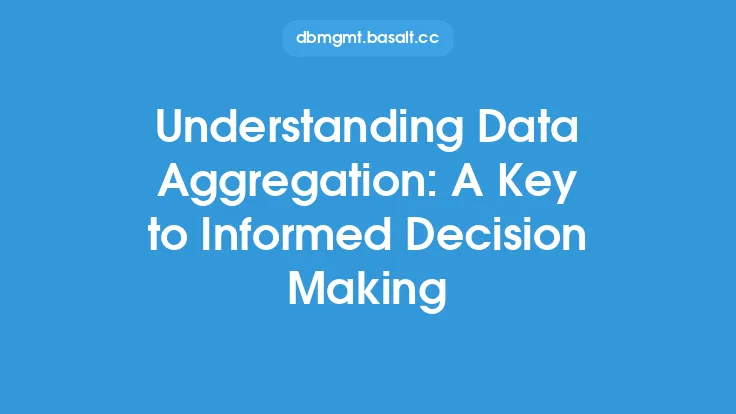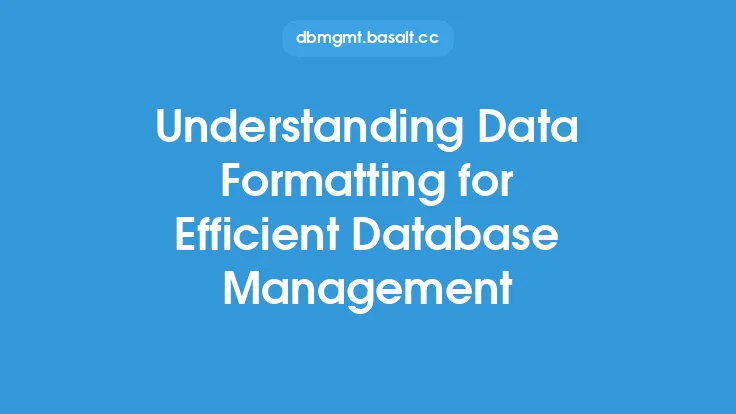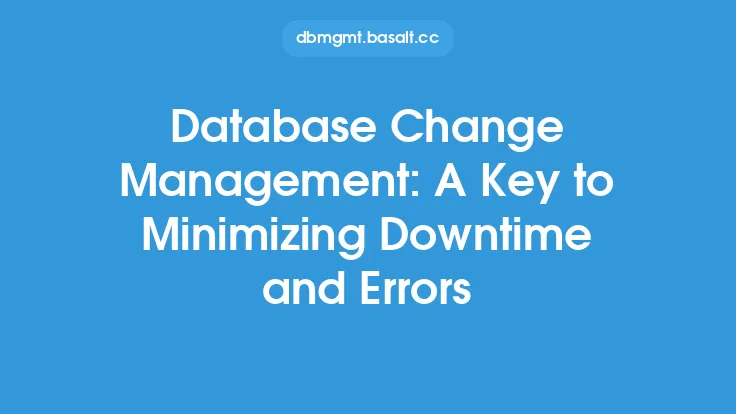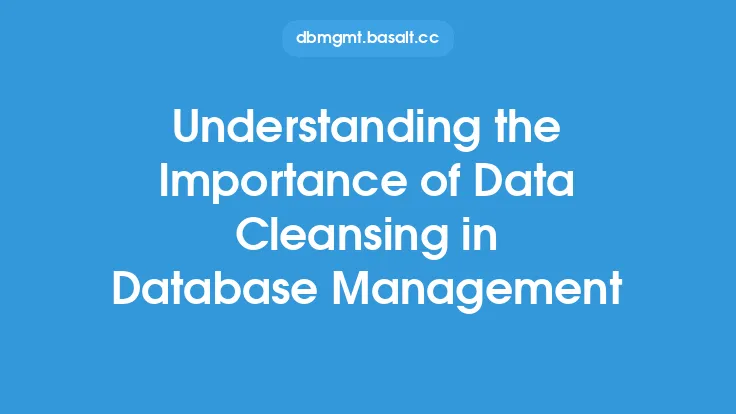Data integration is the process of combining data from multiple sources into a unified view, providing a single, accurate, and up-to-date representation of an organization's data. This process is critical in today's data-driven world, where organizations rely on data to make informed decisions, drive business growth, and stay competitive. In the context of database implementation, data integration plays a vital role in creating a unified database management system that can handle large volumes of data from diverse sources.
What is Data Integration?
Data integration involves the process of collecting, transforming, and loading data from multiple sources into a target system, such as a data warehouse, data lake, or operational database. The goal of data integration is to provide a unified view of an organization's data, which can be used for reporting, analytics, and decision-making. Data integration can be performed in various ways, including batch processing, real-time processing, and event-driven processing. The choice of data integration method depends on the organization's specific needs, data volume, and system architecture.
Benefits of Data Integration
Data integration offers several benefits to organizations, including improved data quality, increased data consistency, and enhanced decision-making capabilities. By integrating data from multiple sources, organizations can eliminate data silos, reduce data redundancy, and provide a single, unified view of their data. This, in turn, enables organizations to make informed decisions, identify new business opportunities, and improve their overall competitiveness. Additionally, data integration can help organizations to comply with regulatory requirements, such as data governance and data privacy laws.
Data Integration Architecture
A typical data integration architecture consists of several components, including data sources, data transformation, data loading, and data storage. Data sources can include relational databases, flat files, XML files, and other data formats. Data transformation involves converting data from one format to another, using techniques such as data mapping, data validation, and data cleansing. Data loading involves transferring data from the source system to the target system, using techniques such as bulk loading, incremental loading, and real-time loading. Data storage involves storing the integrated data in a target system, such as a data warehouse, data lake, or operational database.
Data Integration Techniques
There are several data integration techniques, including ETL (Extract, Transform, Load), ELT (Extract, Load, Transform), and data virtualization. ETL involves extracting data from multiple sources, transforming the data into a consistent format, and loading the data into a target system. ELT involves extracting data from multiple sources, loading the data into a target system, and transforming the data into a consistent format. Data virtualization involves creating a virtual layer on top of multiple data sources, providing a unified view of the data without physically moving the data.
Data Integration Challenges
Data integration can be a complex and challenging process, especially when dealing with large volumes of data from diverse sources. Some common data integration challenges include data quality issues, data format inconsistencies, and data security concerns. Data quality issues can arise from incomplete, inaccurate, or inconsistent data, which can affect the accuracy of the integrated data. Data format inconsistencies can arise from different data formats, such as relational databases, flat files, and XML files, which can make it difficult to integrate the data. Data security concerns can arise from sensitive data, such as customer information, financial data, and personal identifiable information, which requires special handling and protection.
Data Integration Tools and Technologies
There are several data integration tools and technologies available, including data integration software, data governance tools, and data quality tools. Data integration software, such as Informatica PowerCenter, IBM InfoSphere DataStage, and Microsoft SQL Server Integration Services, provides a platform for designing, developing, and deploying data integration workflows. Data governance tools, such as Collibra, Talend, and IBM InfoSphere Information Governance, provide a platform for managing data governance policies, data quality rules, and data security protocols. Data quality tools, such as Trifacta, Alation, and IBM InfoSphere QualityStage, provide a platform for profiling, validating, and cleansing data.
Conclusion
In conclusion, data integration is a critical component of unified database management, providing a single, accurate, and up-to-date representation of an organization's data. By understanding the concepts, techniques, and challenges of data integration, organizations can design and implement effective data integration strategies that meet their specific needs and requirements. With the right data integration tools and technologies, organizations can overcome data integration challenges, improve data quality, and make informed decisions that drive business growth and competitiveness. As data continues to play an increasingly important role in business decision-making, the importance of data integration will only continue to grow, making it a vital component of any organization's database implementation strategy.





